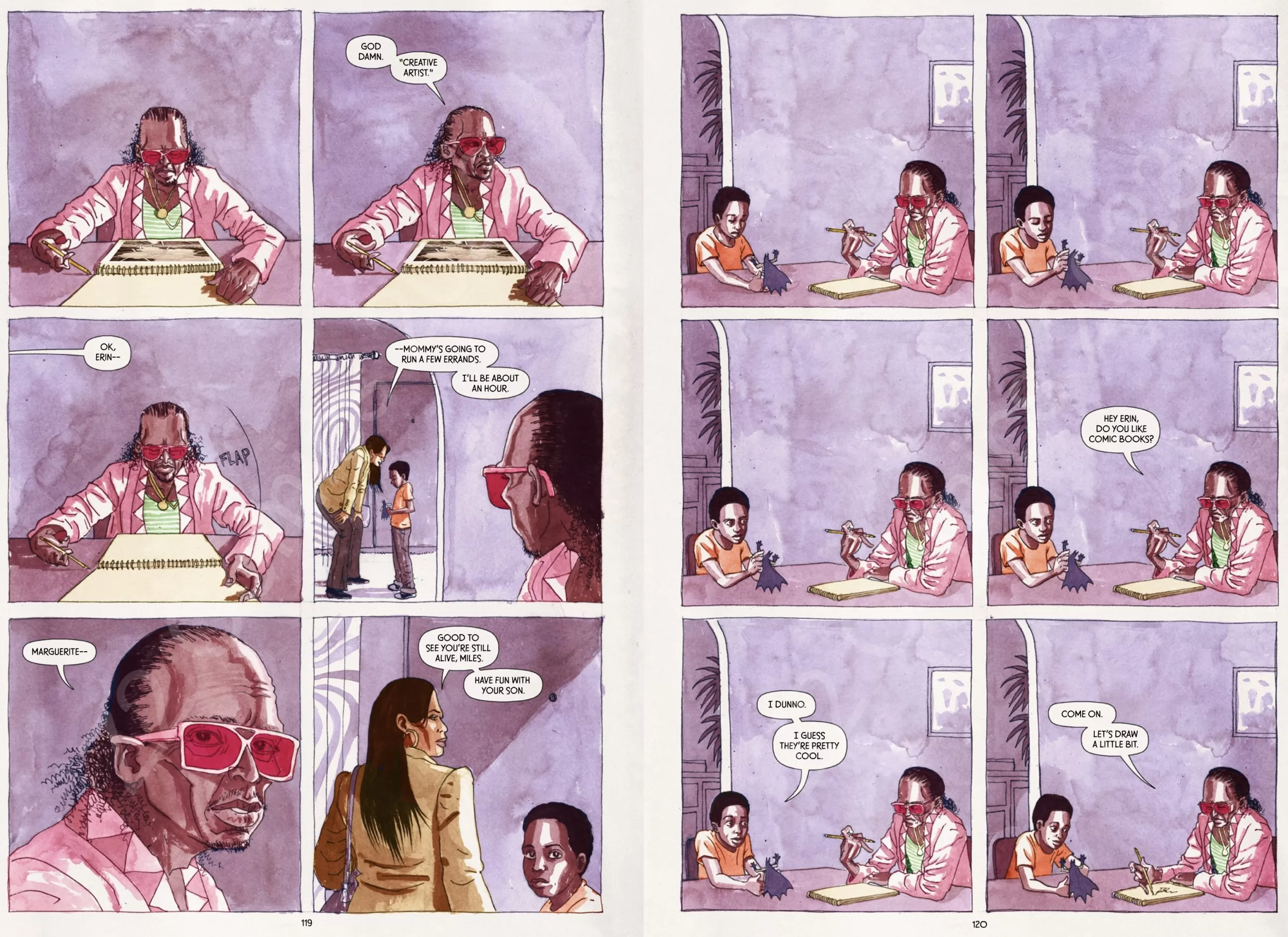Amongst the luminaries who inspired a generation of musicians in the mid-20th century, Miles Davis was an exception. A lodestar talent in a universe all of his own. His influence and career in music was multi-generational, and his album, Kind of Blue, is still considered the greatest Jazz album of all time. When everyone was ditching jazz clubs for the rock concert, and artists wanted to become the next rockstar, it was Miles Davis who took the stage emphasizing the importance of reinventing yourself, moving from post-bebop to electric jazz, wailing on a trumpet-like electric guitar with the inclusion of wah pedals and all.
This was the kind of music jazz instructors taught in private schools. The kind of material meant to those seeking to understand the basic fundamentals of chord progressions, arpeggios, and the very fibers that made sound, musical.
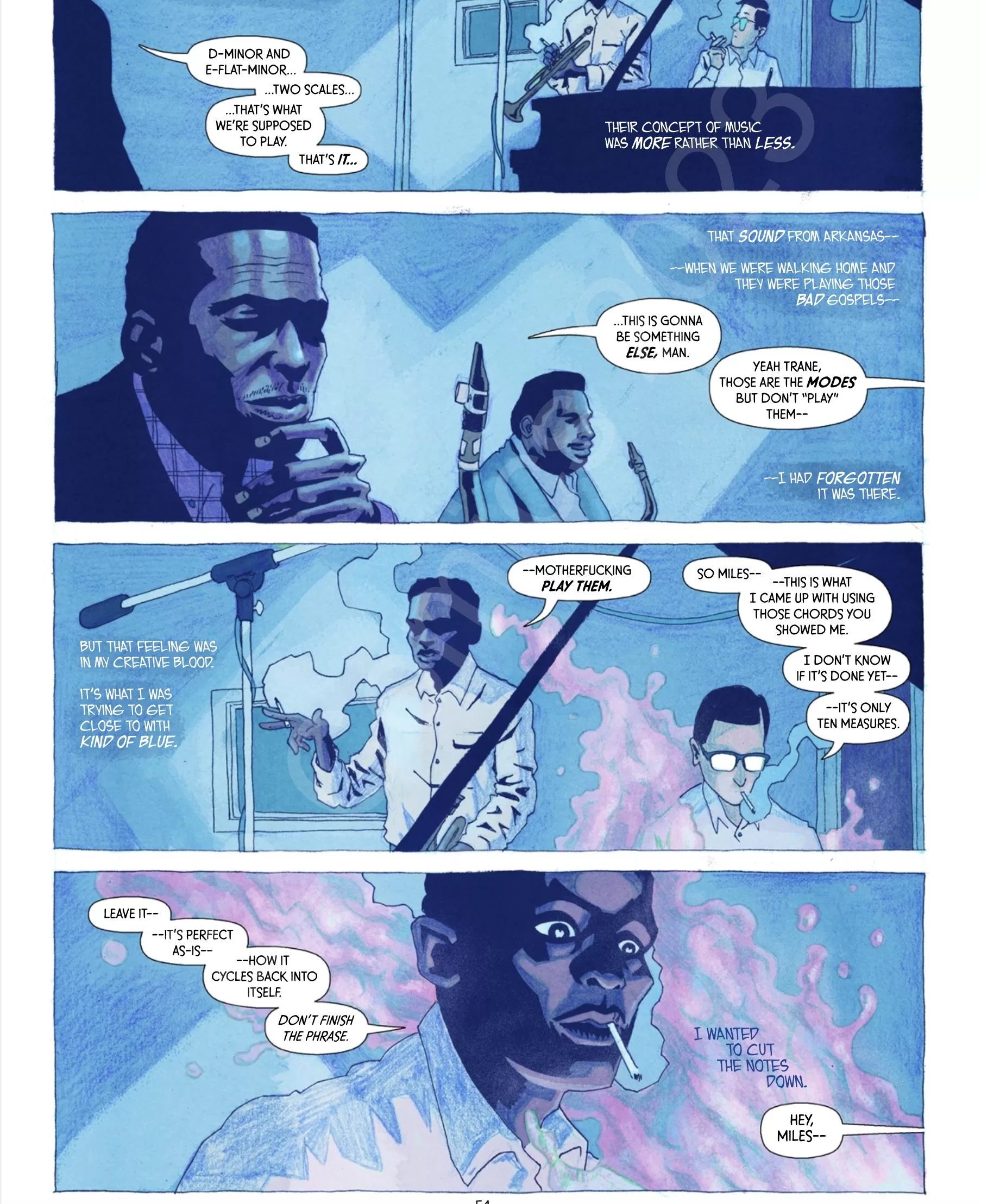
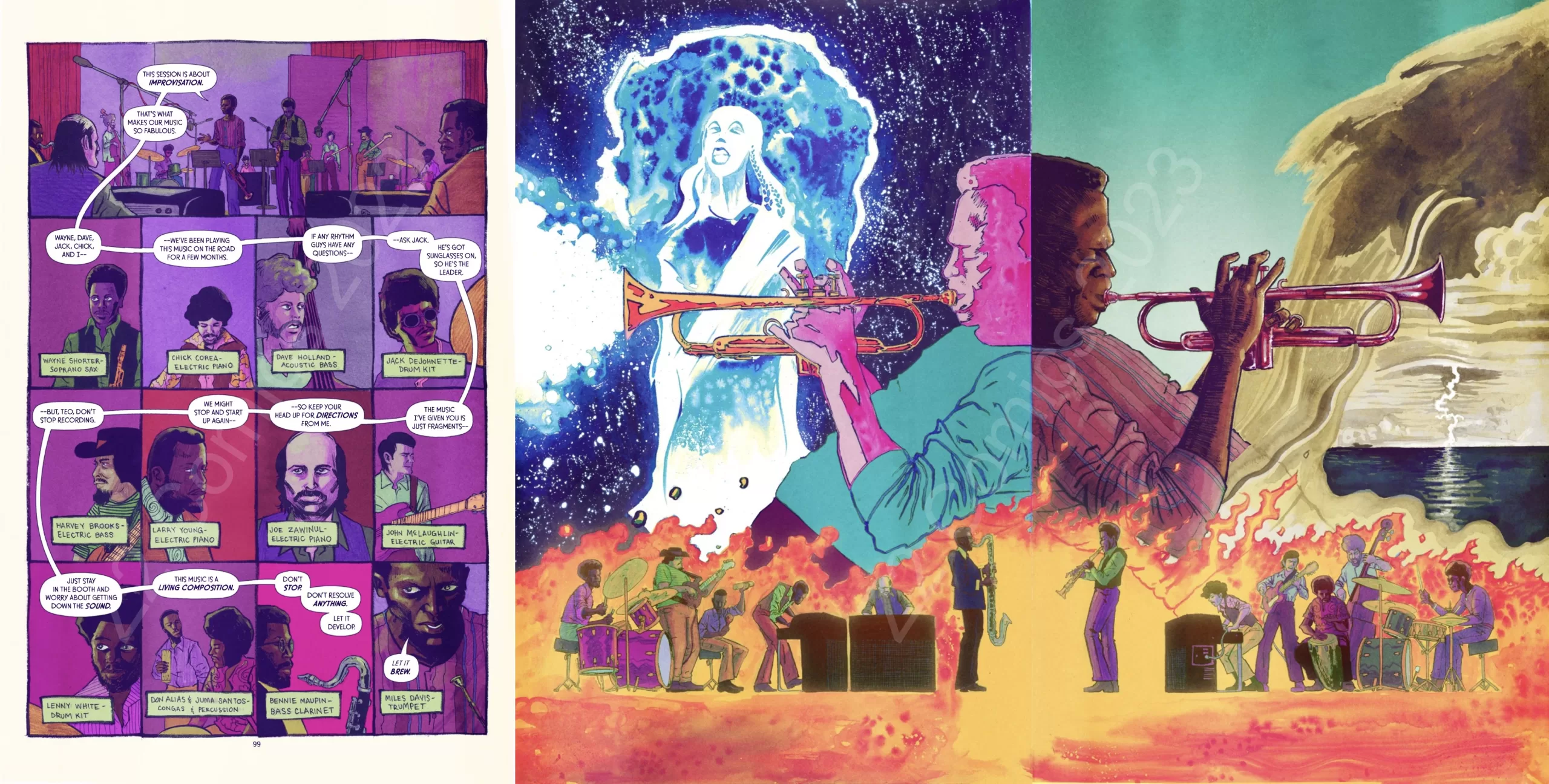
“But what was Miles’ s search for the Sound?”
Better yet, how does one visualize the color of music? The task was meant for someone who knew Miles Davis’s story well. A virtuoso who equally knew both worlds of art and music just like Miles Davis himself. It’s why cartoonist and jazz scholar, Dave Chrisholm – known for his musician-inspired comic works such as Enter the Blue and Chasin’ the Bird atop his own stylized trumpet career – heeded that call.
Created in collaboration with Z2, this graphic novel biography, Miles Davis and The Search for The Sound by Dave Chisholm, is a creative tour de force venture that looks into the life and times of Miles Davis. Having impressed Davis’s son Erin with his graphic novel work depicting the life of Charlie Parker in Chasin’ the Bird, with the Miles Davis estate’s permission, Chisholm was allowed to create this spiritual sequel. This time focused in on the life journey of Jazz legend, Miles Davis.
It begins with Davis recovering from a debilitating stroke in 1982, having found painting as a form of creative therapy. Chisholm skillfully navigating these moments of vulnerability in the life of Miles Davis’s by interspersing the artist’s own words as he draws about, with fond remembrance, his life’s journey with music. Notably, it underscores how Kind of Blue missed the mark for Miles Davis, a revelation savored against the backdrop of its tunes. The comic then became a bit of a page-turning look at a man’s artistic pursuit of perfection. Above all else, Miles Davis’ search for sound…
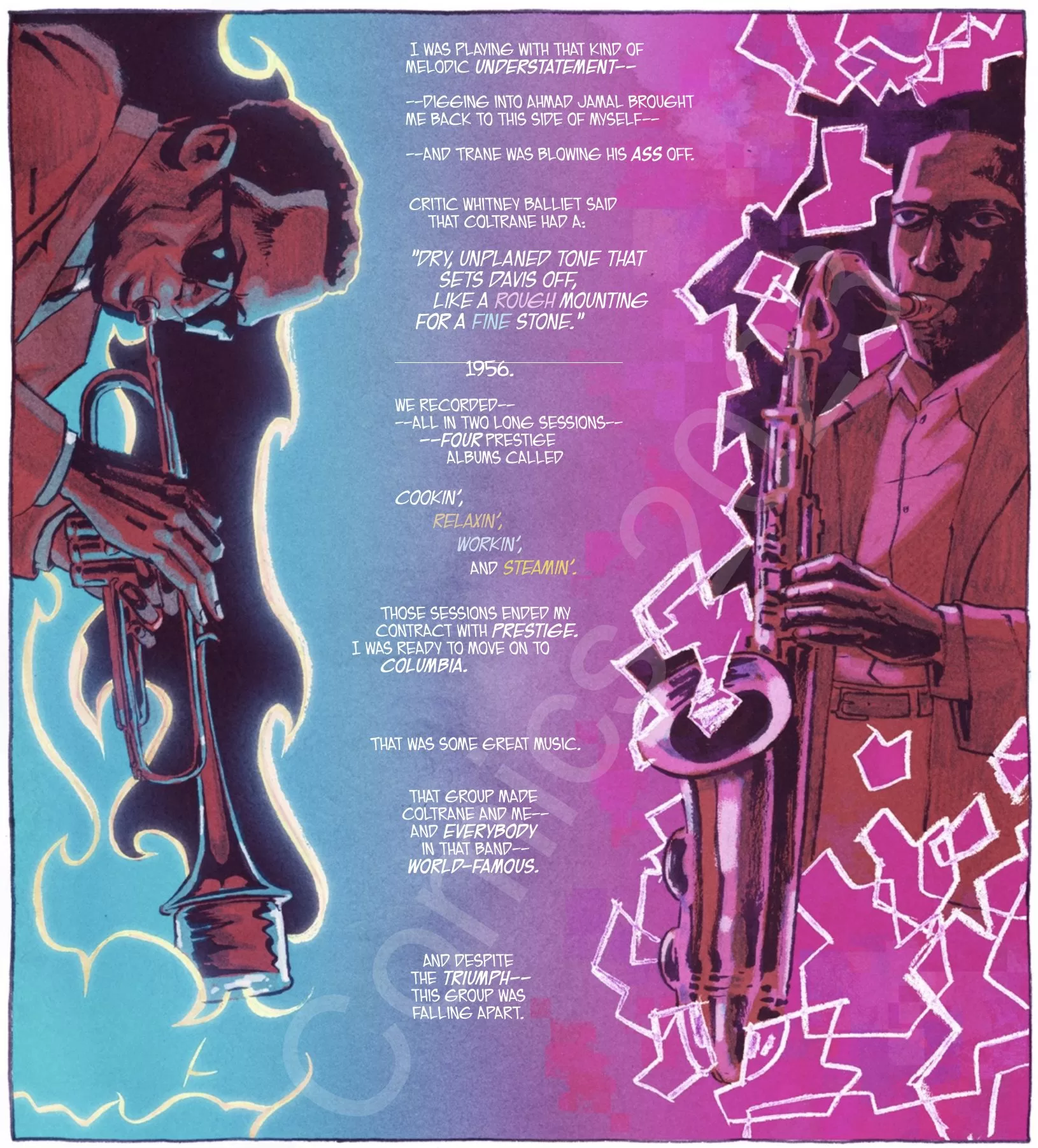
With kinetically paced, forward-moving art, you can see that this story is going places in terms of its pacing, becoming a visual symphony that mirrors Davis’s pugilistic drive in pursuit of that perfect sound. The pages thus feature abstract shapes splattered with vibrant colors and deft paneling work utilizing techniques of knowing how to stretch out an image or give emotional moments of verbosity to the page.
This dramatic use of large panels, layered with color, resonate with the harmonies of the very songs and albums under discussion, creating an intricate tapestry that reflects the essence of Davis’s music, in a visual metaphor for the evolution of Davis’s musical odyssey. Some of the best moments in the story embrace moments of stillness. Or at other times, the opposite, loaded with character work and dictations of how his artists around him should be playing in the days where Miles was often seen, rushing ahead.
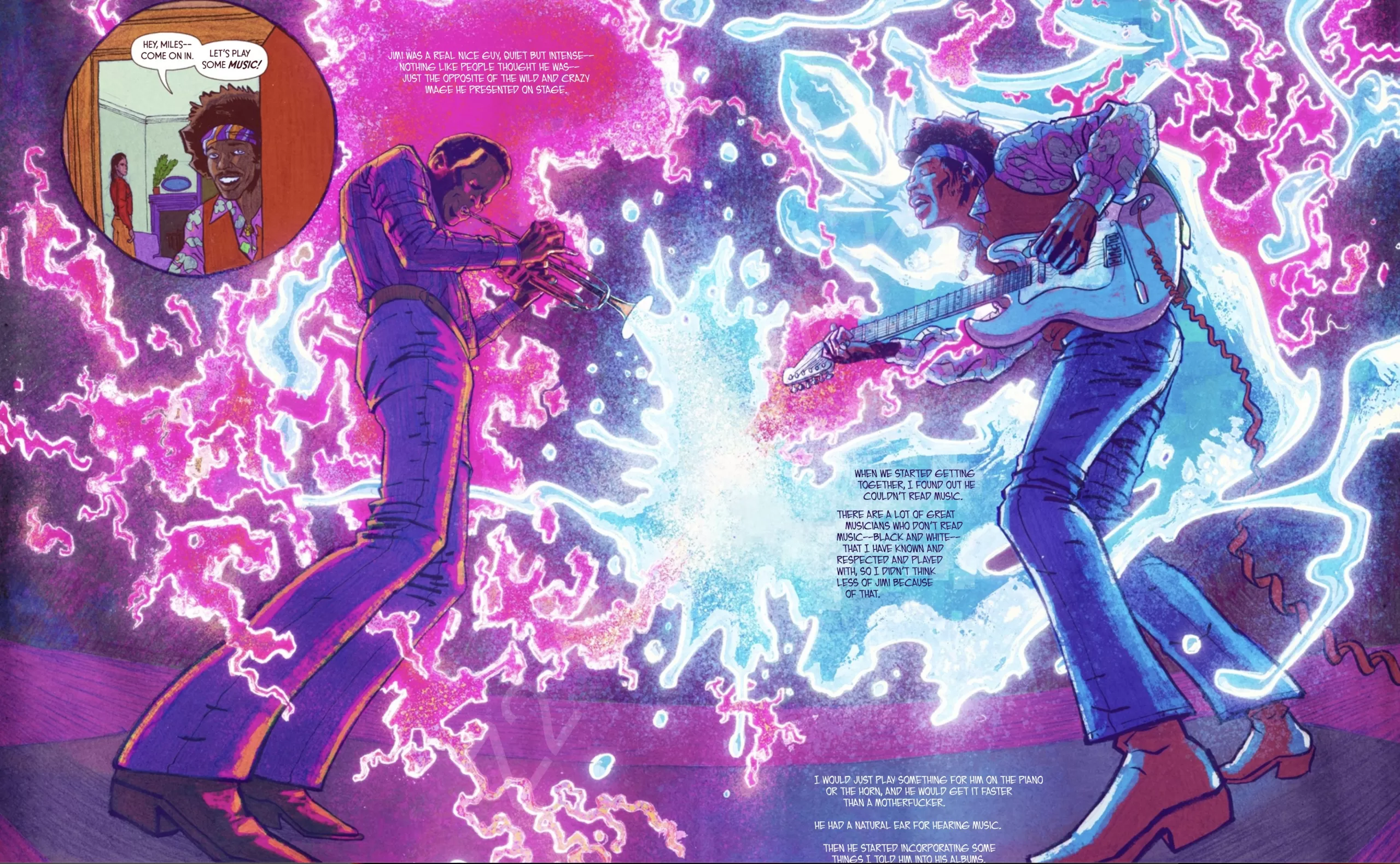
Employing these narrative shifts to showcase his growth over time, the biography offers a tale accessible to all—a human experience of major successes intertwined with intimate failures. Navigating through his life with fellow musicians, including icons like Charlie Parker, John Coltrane, Gil Evans, Art Blakey, Jimi Hendrix, and even later in his life, Prince, the biography does not shy away from the tumultuous aspects of Davis’s personal life—failed marriages, substance abuse, and the intricate web of relationships.
This engaging biography delves into the fragments of Davis’s personal life—a tapestry woven between accomplishments in creating albums and performing with some of the greatest legends in jazz while being utterly atrocious with his often abusive treatment of the very women who took care of him in his life.
Seeing these moments interspersed with Miles’s on-and-off-again struggles with addiction, atop of his complex romantic entanglements, it becomes soon obvious that the selling point of the life and works of this man’s genius is met with his utter disdain for the fact that he had motherhood abandonment issues. His chase for the elusive sound and his relationship with it—capturing a lost innocence and mimicking other autobiographical portrayals often seen in fiction.
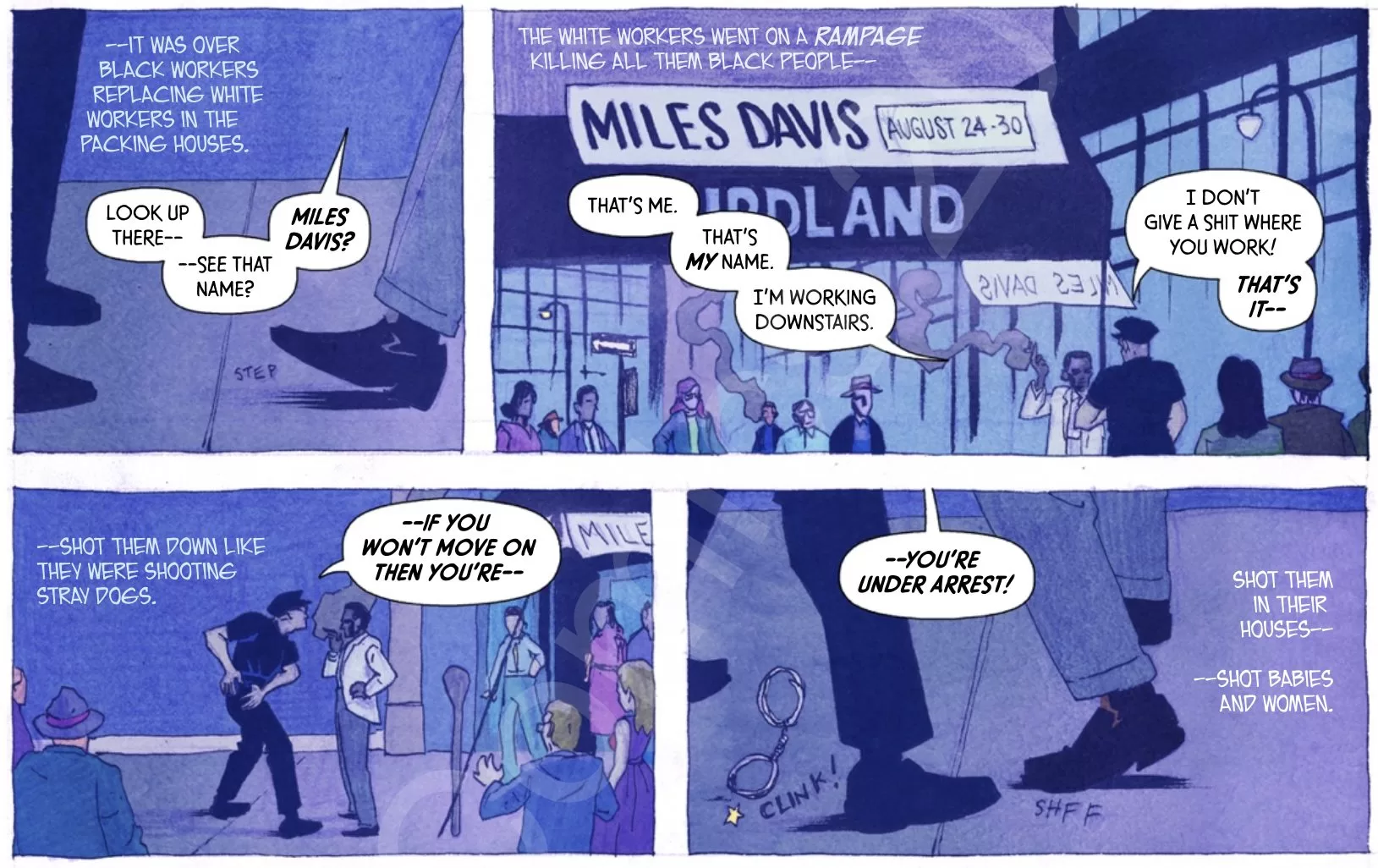 Journeying through Davis’s changing musical styles over the years, the narrative unveils Davis’s range of influences. From his early life performing with Bird to the Davis’s ongoing struggles with race, not only in his personal life, but which was also embedded in the entire cultural tapestry of jazz. Mind you, this story is told during racially charged 20th century America, a country on the cusp of the civil rights movement. Miles’s story then becomes a bit of a message of hope. His dream was to see Jazz as a genre young Black youths could flock toward (but didn’t).
Journeying through Davis’s changing musical styles over the years, the narrative unveils Davis’s range of influences. From his early life performing with Bird to the Davis’s ongoing struggles with race, not only in his personal life, but which was also embedded in the entire cultural tapestry of jazz. Mind you, this story is told during racially charged 20th century America, a country on the cusp of the civil rights movement. Miles’s story then becomes a bit of a message of hope. His dream was to see Jazz as a genre young Black youths could flock toward (but didn’t).
It is here where Chisholm’s dynamic storytelling approach and adventurous designs groove together, creating a synesthetic canvas through visuals of Miles’s life. The results are pages that mirror the diversity and vibrancy of Davis’s musical legacy, providing readers with an intoxicating introduction to the life of a challenging genius whose quest for sound led him through a myriad of both styles and ensembles.
The pages thus unfold like a finely-paced musical masterpiece (one which you can play albums of Miles Davis’s music along with), inviting readers to acquaint themselves with Miles Davis not just as an artist, but also as an incredibly flawed man whose struggles felt ineffably human. The narration used in the panels is a delicate dance of Miles’s own words, drawn from interviews, essays, and his own written biography about his life.
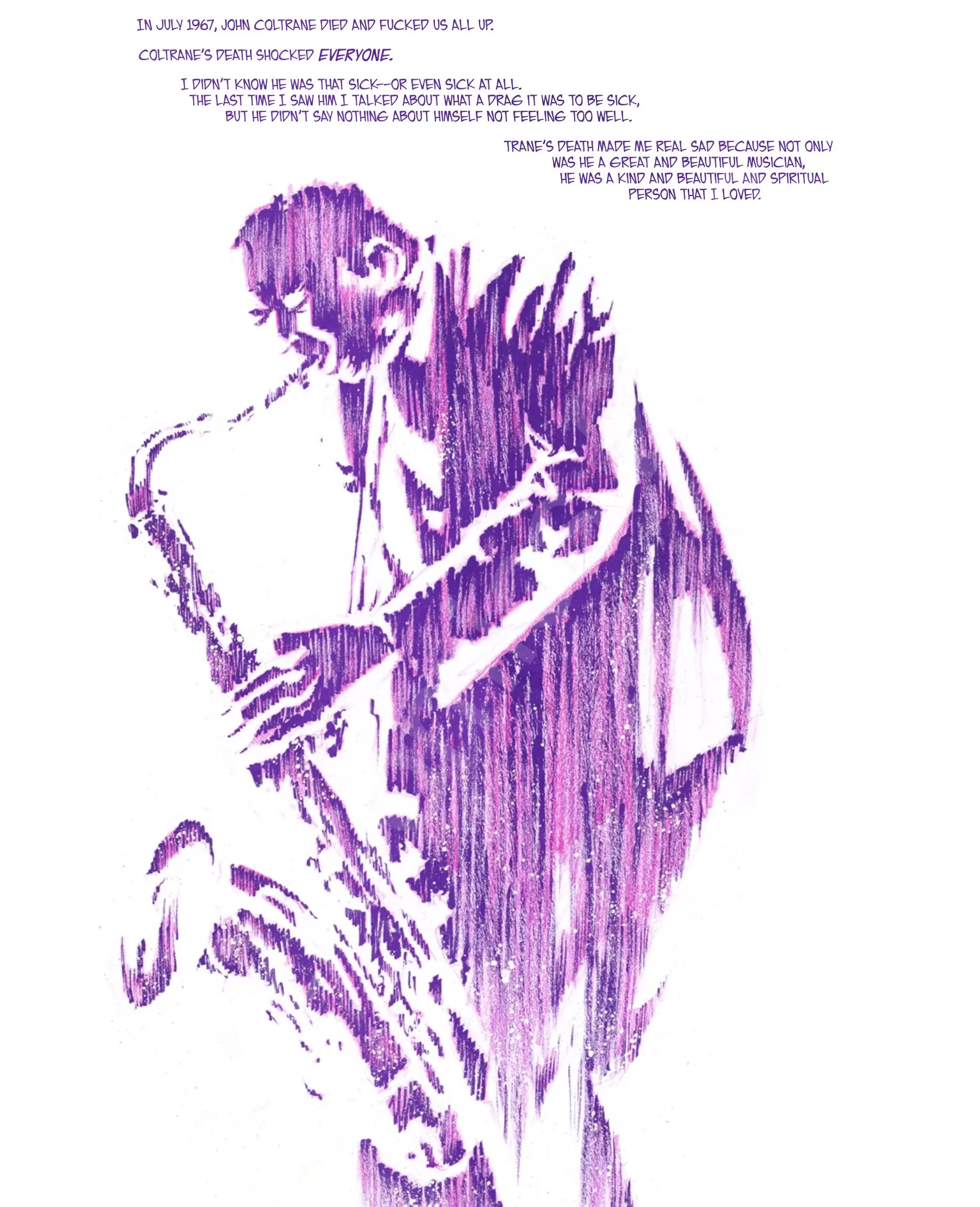
In this work, Miles Davis, the person, emerges out of this biography a complex individual entangled in a struggle for love, connection, and an unquenchable thirst for artistic perfection. For those unfamiliar with Davis’s journey, this narrative unfolds with surprising humanization and the inevitable ebb and flow of creative inspiration all seemed tied to this grandiose purpose…
In essence, Miles Davis and The Search for The Sound transcends the boundaries of a his own biography. It is a testament to the evolution of music, the death of an era, and the interplay of styles and shapes that could be provoked with sound. It invites readers not only to understand Davis but to immerse themselves in the fusion of person, experience, and the ever-changing tapestry of musical history. All in a symphony of words and images and an ode to a musical genius whose search for sound forever altered the landscape of music history.
Read this book if you love Miles Davis or would like to see a prime example of synesthesia in action. It’s a fantastic work of art and arguably, Dave Chrisholm’s best work.
